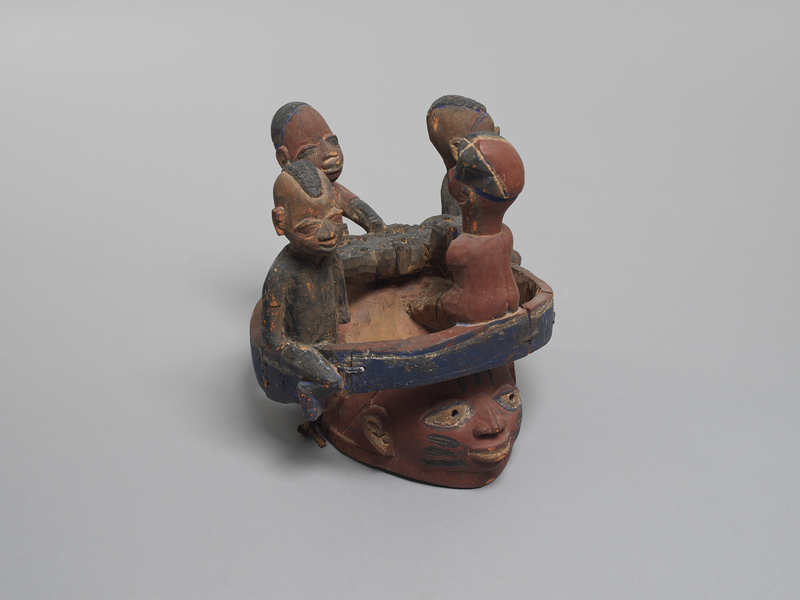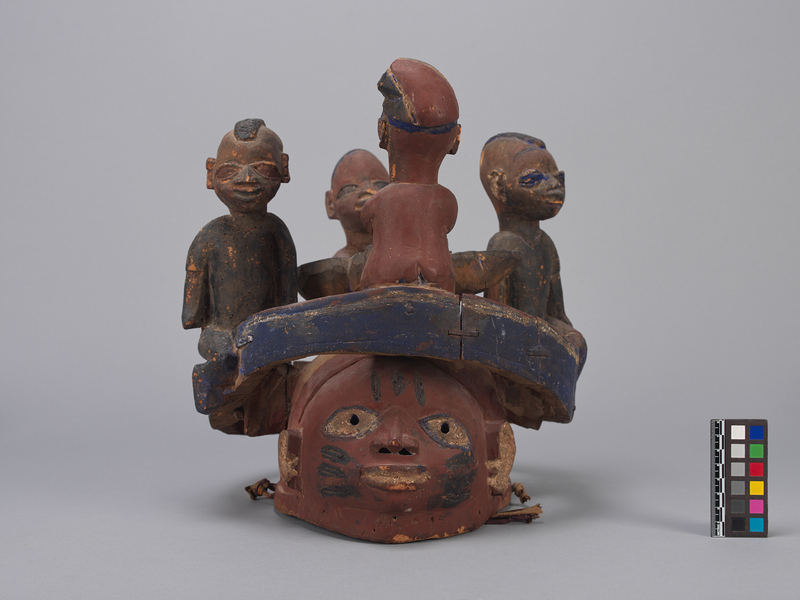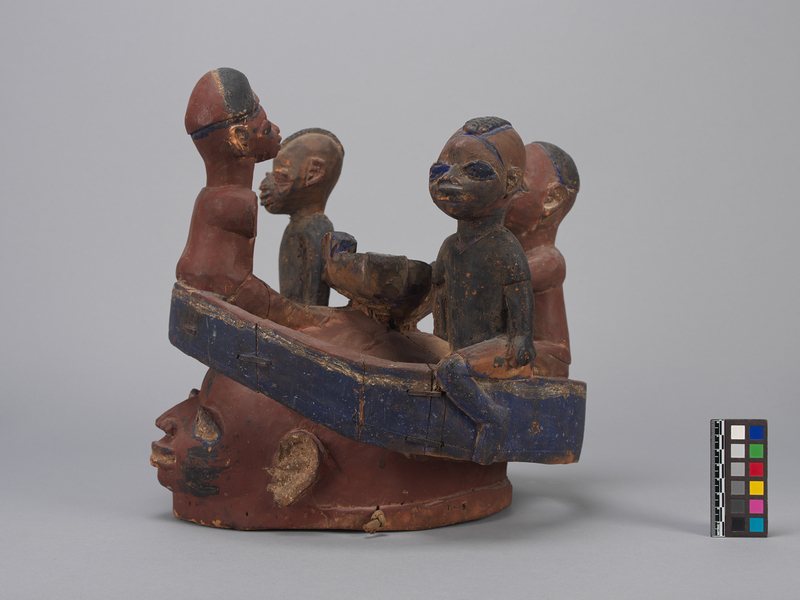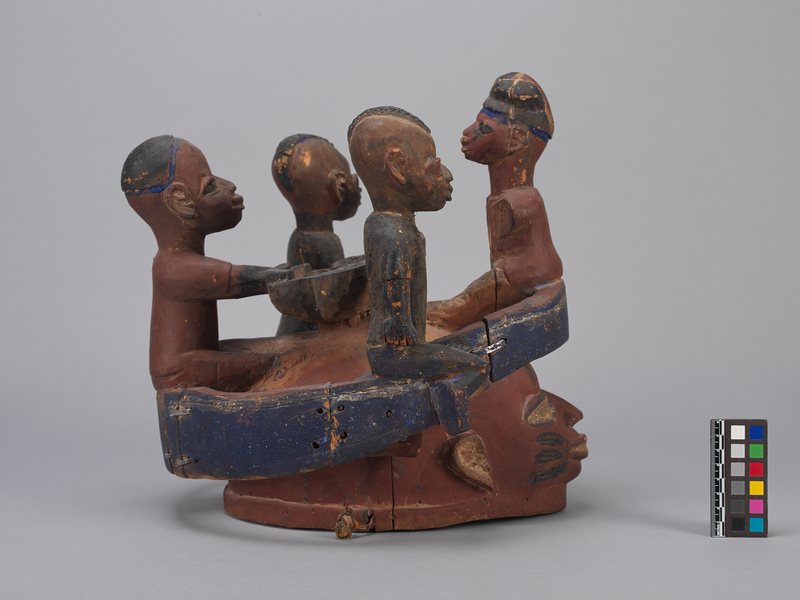Gelede Mask Item Number: 3595/16 from the MOA: University of British Columbia






Description
Wooden headdress, or mask, carved to depict a humanoid head wearing a circular headpiece, with four smaller humanoid figures sitting on it. The main head is primarily dark red, with protruding eyes outlined in blue and a protruding nose, mouth, and ears. Circular holes are bored through the centre of each eye. Triangular holes are bored through the bottom of each nostril. Three black incised lines are on each cheek as well as the forehead. This head has a blue circular headpiece, on which four small humanoid figures are sitting around some kind of table or board (Wari ?). The figures at the front and back of the head are facing each other; while the figures sitting near the ears are facing the same direction as the main head. Below the latter two figures, a fibre chin strap for the wearer of this headdress/mask is looped through small vertical sections of bored-through wood.
History Of Use
The gélède mask is worn more like a headdress, on top of the head, by male dancers. The masks are worn during Yoruba Gelede festivals which honour women, both living and dead, in particular the powerful "Mothers" (awon iya wa), a group that includes female ancestors and deities, as well as elderly women of the community. When dancers perform the Gelede dance they are displaying the powers of their female ancestors, who are considered to the beginning of the nation, makers of community and the protectors of children. They have the ability to affect the wellbeing of individuals or the community in positive and negative ways.
Narrative
Purchased by the Art Gallery of Greater Victoria in 1973; sent on longterm loan to the Kelowna Museum (now the Okanagan Heritage Museum) in 1998, then deaccessioned and transferred to them in 2002.
Cultural Context
Gelede festival dances.
Item History
- Made in Nigeria
- Owned by Okanagan Heritage Museum before September 14, 2022
- Received from Okanagan Heritage Museum (Transferring institution) on September 14, 2022
What
Who
- Culture
- Yoruba
- Previous Owner
- Okanagan Heritage Museum
- Received from
- Okanagan Heritage Museum (Transferring institution)
Where
- Holding Institution
- MOA: University of British Columbia
- Made in
- Nigeria
When
- Ownership Date
- before September 14, 2022
- Acquisition Date
- on September 14, 2022
Other
- Condition
- good
- Accession Number
- 3595/0016